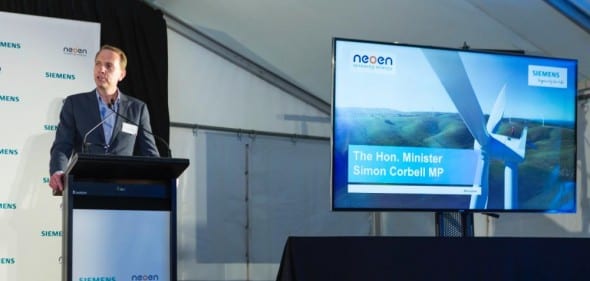Renew Economy
If current wholesale electricity prices continue as they are across Australia, the ACT will not just have zero emissions electricity by 2020, it may also be getting most of it for free.Victoria’s Renewable Energy Target (VRET) is a major milestone in Victoria’s transition to clean energy. It sets an obligation on the government to bring online 5400 MW of new renewable energy by 2025, which will mean that 40 percent of our state’s supply comes from wind and solar!
To deliver the VRET, the government has adopted a reverse auction system which has proved to be hugely successful for the ACT in achieving their target.
Reverse auctions help deliver renewable energy projects by smoothing the high and low prices in the wholesale energy market – providing certainty and making it easier for renewable projects to access financing from banks.
This is done by signing a contract that guarantees a consistent rate for energy produced by wind and solar over a fifteen year period. The hard part in all of this is agreeing on a fair level of support for projects.
The wholesale energy market is a pretty crazy place, with prices soaring to over $11,000 on days when demand is really high and falling below zero at other times.
To overcome this, the government sets a strike price – a consistent price for energy – and gives developers a chance to compete to provide this energy. This consistent rate cuts both ways – when energy prices are low, the government agrees to top up the payment made to renewable energy companies. On the other hand, when prices are high the renewable energy company pays the government the difference.
In both scenarios, the government is taking a bit more of the risk and the renewable energy developer is getting less income in the door, in return for the certainty they need to get their project off the ground.

The government launched its first auction in August 2017, asking renewable energy developers to build 650 MW of renewable energy.
The auction was structured in two parts – a strike price and a capacity payment. The strike price (discussed above) is the fixed rate that they would be willing to pay for energy. Companies did not compete on this rate. The capacity payment, which is an annual payment to renewable energy developers for every megawatt of energy installed, was where they asked companies to compete – with every company submitting a private bid of how much funding they’d need.
Of course, the bids won’t just judged on price – they need to show how they will contribute to local development, share benefits with the community, provide training opportunities and create jobs.
The benefits of the VRET
Modelling from Ernst & Young showed that a 5150 MW target would:
- Create over 9000 jobs
- Reduce our climate pollution by 16 per cent.
- Reduce energy bills an average household bill by $40 a year. (While this is a modest saving, it shows that we can make a major dent in our carbon pollution while reducing the pressure on households.)
Victorian Energy Minister Lily D’Ambrosio said the results of the first auction were very positive. She said Victoria had received over 15 bids offering to build 3500 MW of renewable energy. This is greater than the Snowy Hydro 2, but could be built in years rather than decades.

Thanks to state leadership Victoria is in the midst of a clean energy boom.
This incredible demand shows how fast we can transition to a clean energy economy.
That’s why we’ve been calling on the government to go bigger than the initial 650 MW and commit to building 1500 MW as part of this first auction. This would send a clarion call that Victoria is Australia’s leader on renewable energy and would get the new energy supply we urgently need into the system.